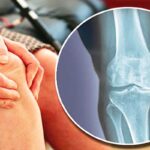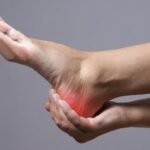
Work-related injuries in orthopedics can significantly impact an individual’s well-being and ability to perform their job effectively. It is important to understand the common conditions and implement prevention strategies to ensure a safe working environment. In this article, we will discuss common work-related orthopedic injuries, risk factors, prevention techniques, and the expertise of Dr. Ashish Suryawanshi, an orthopedic surgeon specializing in work-related injuries.
Orthopedic injuries resulting from work-related activities can range from mild strains to severe fractures. Understanding the nature of these injuries and implementing preventive measures is essential to safeguard the health and well-being of workers.
Common Work-Related Orthopedic Injuries-
- Musculoskeletal disorders (MSDs): These include conditions like carpal tunnel syndrome, tendinitis, and low back pain, which can result from repetitive motions, poor posture, and prolonged periods of sitting or standing.
- Fractures and dislocations: Work-related accidents or falls can lead to fractures or dislocations, often involving the wrists, shoulders, or ankles.
- Tendon and ligament injuries: Overexertion, sudden movements, or repetitive stress can cause tendonitis, sprains, or tears in tendons and ligaments.
Risk Factors for Work-Related Injuries-
Several factors contribute to work-related orthopedic injuries:
- Physical factors: Repetitive motions, heavy lifting, and awkward postures can strain the musculoskeletal system, leading to injuries over time.
- Work environment: Poor ergonomics, slippery surfaces, inadequate lighting, and other hazards increase the risk of accidents and injuries.
- Lack of proper training and safety protocols: Insufficient training in lifting techniques, improper use of equipment, and a lack of awareness regarding safety protocols can contribute to work-related injuries.
Prevention of Work-Related Injuries-
Preventing work-related orthopedic injuries involves a combination of measures:
- Ergonomic interventions: Design workspaces to promote proper body mechanics and provide ergonomic equipment, such as adjustable chairs, standing desks, and wrist supports.
- Safety training and education: Conduct regular training sessions to educate employees about safe work practices, proper lifting techniques, and the use of personal protective equipment (PPE).
- Implementation of workplace safety protocols: Enforce safety protocols, such as regular equipment maintenance, clear signage for hazardous areas, and prompt reporting and investigation of incidents.
Dr. Ashish Suryawanshi: Orthopedic Surgeon Specializing in Work-Related Injuries
Dr. Ashish Suryawanshi is an orthopedic surgeon with extensive experience in diagnosing and treating work-related orthopedic injuries. His specialized knowledge in this area allows him to provide comprehensive care to individuals who have sustained work-related injuries. Dr. Suryawanshi focuses on understanding the specific demands of different occupations and tailors treatment plans accordingly.
The Role of Rehabilitation-
Rehabilitation plays a vital role in the recovery process for work-related orthopedic injuries. It includes a combination of therapeutic exercises, physical therapy, and occupational therapy to improve strength, flexibility, and functionality. Working closely with healthcare providers and following a personalized rehabilitation plan can optimize recovery outcomes.
Summary-
Work-related orthopedic injuries can have significant consequences for individuals and their ability to perform job-related tasks. By understanding common conditions, recognizing risk factors, and implementing preventive measures, employers and employees can create a safer work environment. Dr. Ashish Suryawanshi’s expertise in diagnosing and treating work-related injuries ensures that patients receive specialized care to facilitate their recovery and return to work.




